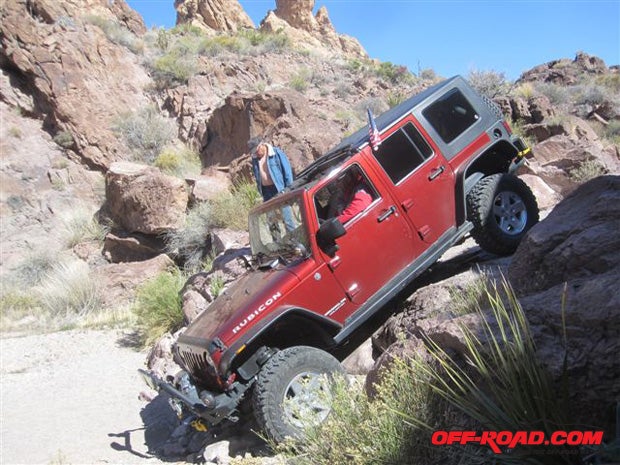
In my opinion, Jeep should include a 3-inch lift and 33-inch tires in the Rubicon option package. After all, the package already includes a heavier-duty transfer case with 4:1 low range, heavier-duty Dana 44 differentials with 4.11:1 gears, selectable lockers, and a front sway bar that can be disconnected from inside the cab. So why not include even larger tires and a lift as well? (Actually, now that I think about it, the Mopar Jeep I tested here last year does include a dealer-installed lift and taller tires, so it’s a good start for Jeep.)
People who are buying Jeeps for the occasional ski trip or backcountry picnic or “the Jeep look” can be satisfied with a Sport or X model, but those of us who enjoy Jeeping the way it’s meant to be enjoyed want a Rubicon and most of us will raise and re-tire our Rubicons sooner or later.
This was Robert Foster’s thinking when he decided to reward himself with a 2008 Rubicon Unlimited. Having served three tours in Iraq as a US Naval chief medical corpsman in combat with the Marines, Robert wanted to explore and camp in the backcountry without anyone shooting at him for a change, and the maroon four-door JK in these photos was just the thing to allow that—except for the scraping, screeching and sliding over the Arizona rocks that he experienced on any trail rated higher than a “3” on a scale of “5.”
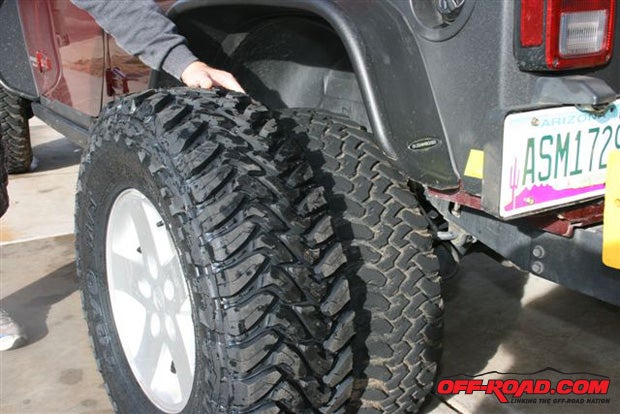
Frustration at not being able to take the trails he really wanted to see—and a rather restricted budget—forced Robert to explore the Internet instead of the more technical trails. With a criterion that included price, quality, warranty, and ease of installation, Robert eventually discovered Daystar (also located in Arizona, which saved on the shipping charges, too) at http://www.daystarweb.com/.
For a bit of background here, Daystar’s lift kits combine the same technology found in their leveling kits but with the addition of a rear lift, and the KJ09153 kit includes four Scorpion shock absorbers. Daystar was the first to enter the leveling kit market in 1995. Though many companies have entered the market since, Daystar’s lift and leveling kits offer many advantages.
1. There’s no metal-on-metal contact—Daystar uses polyurethane material in its kits as an insulator. It absorbs the noise, vibration, and harmonics that come from the suspension and avoids transmitting them to the passenger compartment. (If you take apart any factory suspension, you’ll find rubber, polyurethane, and often both in a typical suspension.)
2. A lifetime warranty—Daystar’s lift & leveling kits are backed by a lifetime warranty. Basically, in the event you experience a problem with a Daystar product, they’ll take care of it.
3. All of Daystar’s lift and leveling kits are manufactured at the plant in Phoenix, Arizona. In-house manufacturing ensures a high level of quality control... and Daystar has the ISO9001 certification to prove it.
4. Most late-model vehicles have gone to a strut type of front suspension. Most of Daystar’s applications are a top-mount design, meaning that Daystar’s components bolt to the top of the factory strut assembly. This type of kit does not preload the factory coil springs, so factory ride quality is maintained, and installation requires only simple hand tools.
5. Daystar lift kits work within the factory suspension design, meaning that they work within the factory’s design parameters to achieve an increase in ride height. Because the kits work within the factory’s original suspension’s design, additional modifications that add complexity and expense to the kit are not necessary. Everything you need is included in the kit and nothing you don’t.
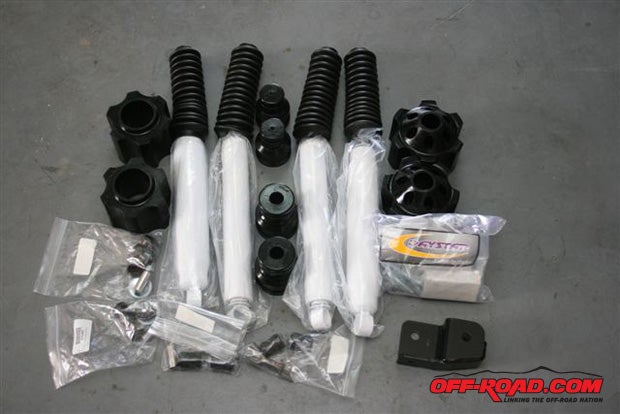
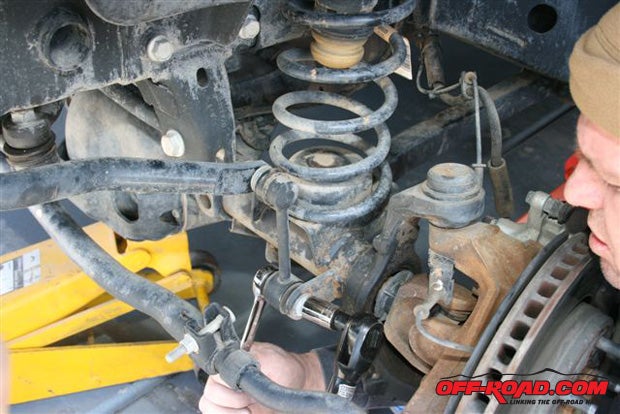
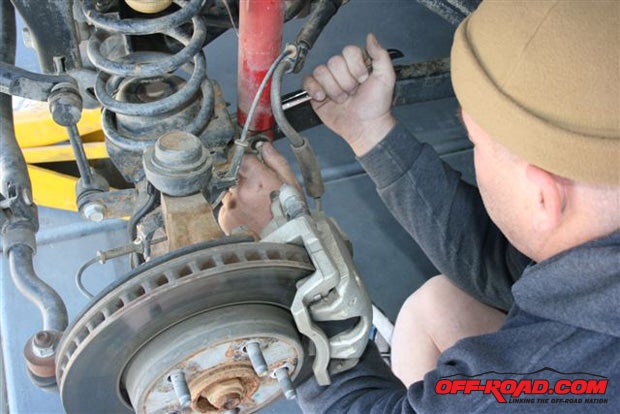
Daystar’s instructions are top-notch and include a listing of the tools you’ll need to perform all the tasks. We found, however, that a second floor jack really helped with raising and lowering the axles during the installation—as you’ll see in the photos—while the Jeep was supported with jackstands. You may need some pry bars and very large screwdrivers as well. Plus, follow Daystar’s step-by-step instructions in numerical order; we didn’t a couple of times and had to retrace our steps before things would go together correctly.
Using the Jeep’s original equipment (OE) coil springs—Daystar uses 3-inch high polyurethane spacers for the increase in height—we expected the ride to be exactly like that of the original Rubicon. However, we were pleasantly surprised to feel the Jeep actually has a better off-road ride after the lift kit installation than before—there’s no change in the on-road ride that we could notice. Other than the taller, heavier-duty (and heavier) Toyo Open Country M/T LT285/75R17 tires (“285” translates to approximately a 34-inch diameter), the only change to the OE suspension are the longer Daystar Scorpion shocks. The shocks seem softer initially (so the smaller bumps and ruts aren’t felt as much as before) and then they dampen down on the bigger dips, rocks and ridges in a progressively stiffer manner.
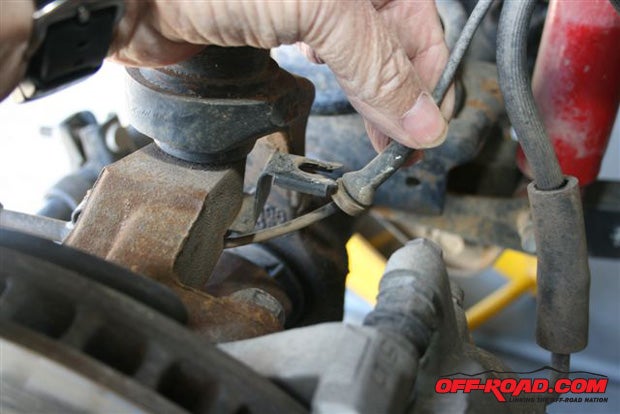
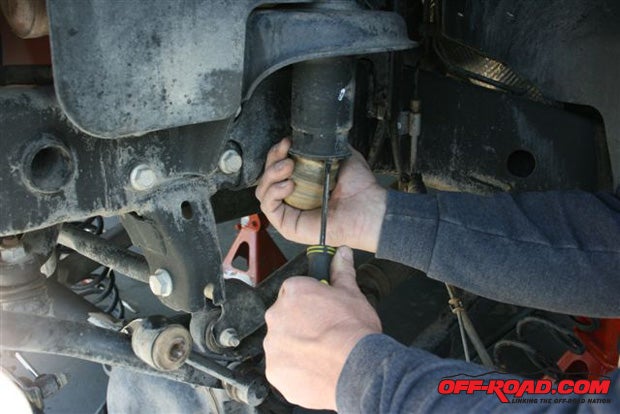
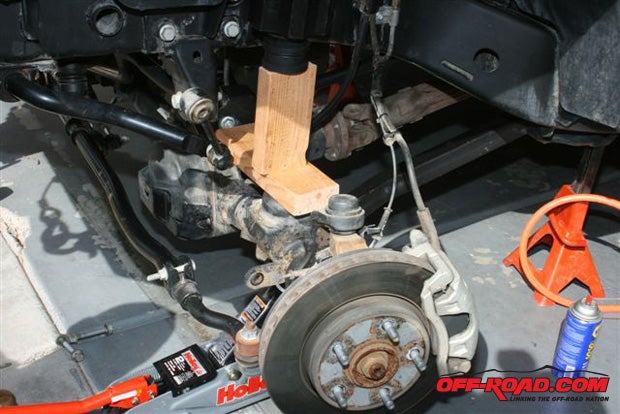
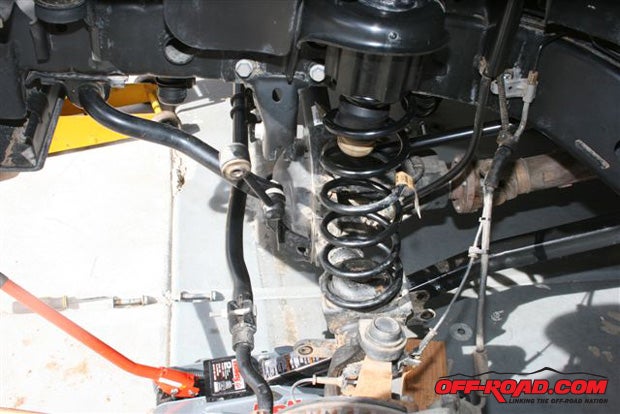

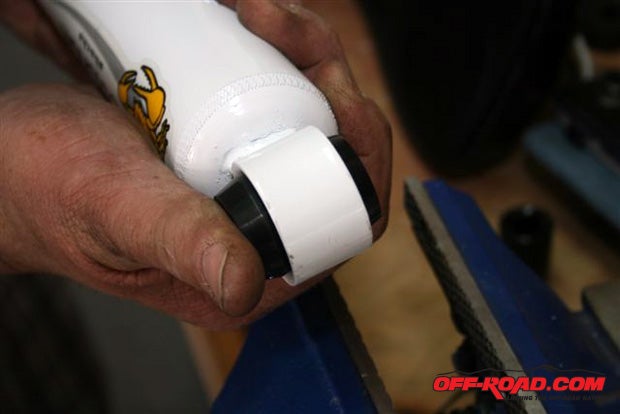

 Your Privacy Choices
Your Privacy Choices